
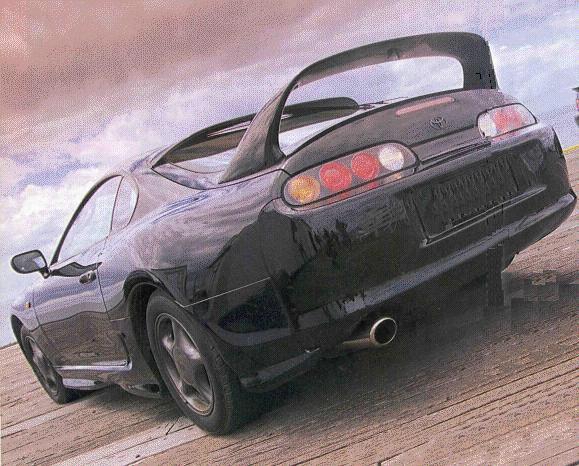
| Wheels Magazine |
|---|
| Jeckyll-hakasei and Hyde-san |
Lexus SC400 v Japanese Toyota Supra MkivA subtle style statement and a bad-boy bombshell, both grown on the same platform and now available in Oz. Professor Bob Hall dons white lab coat and wild hair in search of the scalding potion that turns one into the other. The two coupes share a significant amount of genetic code, but you'd never know it by looking. Or driving as it turns out. But a DNA test would certainly show that the Supra and Soarer are members of the same family, springing as they do from a common basic platform. Thing is, they were born to very different roles. 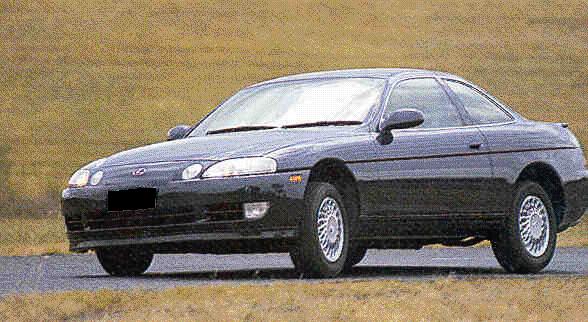 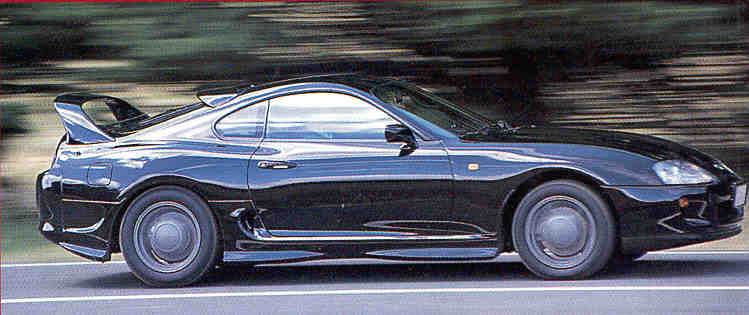 Supra is the quintessential Japanese muscle car. Those who remember the previous generation car know exactly what that means. Old Supra was a grand tourer for those who thought size (and weight) really mattered. But by 1993, when a new model was ready, the strength of the Yen meant the Supra was too expensive for Australia. It was Toyota's loud answer to the 300ZX and like the Nissan, had a 3.0 litre six and front-engine, rear drive layout. It's optional sequential twin turbochargers - not seen on the ZX - gave it a big performance edge. The Toyota Soarer - also badged as the Lexus SC - was designed primarily for North America. Through never intended for Oz, rumour has it Toyota Australia would love to get its hands on this luxury coupe. So neither car is imported by Toyota, but Sports and Luxury Cars of Melbourne has begun importation of both models, with full Australian compliance. Stylistically, the Supra is an extroverts extrovert. If you like headlights and tail lamps, this is your car. The count comes to 14. Into wings? The Supra's got your name on it, with one of the most absurb aerodynamic devices on any production car since the 1970 Plymouth Superbird. There are wingless models too, but even without the wing, Supra is an attention-getter. 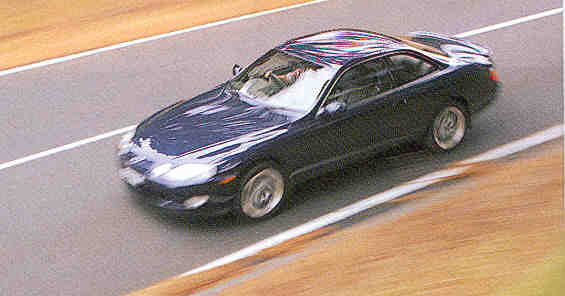  The Soarer SC on the other hand, is a svelte notchback coupe. It demonstartes Toyota's design staff - or at least some of them - possess both taste and a degree of self-constraint. Unlike the Supra, the Soarer is a marvel of restrained sophistication. The only lapse is the foglamps, plopped disconcertingly in the upper surface of the front fascia between the headlamps. But these aside, the Soarer is a timeless design. You wouldn't guess its near the end of its model cycle. Riding on a slightly longer wheelbase (2690 mm v 2550 mm) than the Supra, the Soarer uses three engine options. Cheapest is a naturally aspirtated version of the Supras 3.0 litre six, followed by a 2.5 litre turbo six and a 4.0 litre V8 (from the LS400 Sedan). Top spec versions get active pneumetic suspension and the universally sought after Japanese technical advance of four-wheel steering. With both of these features missing from the Supras spec sheet, would it be cynical of us to suggest they were less technical breakthroughs than marketing exercises? Maybe! We sampled a V8 Soarer and a turbocharged Supra. The eight is virtually identical to the Lexus LS400's, making 194kw at 5400rpm and 365nm of torque at 4600rpm. The Supra neatly outpowers and out-torques that with 209kw at 5600rpm and 440nm at 3600rpm. The turbo Supra uses a six-speed manual (five speed in the atmo model) and offers four-speed automatic as an option. The V8 Soarer is an automatic only. 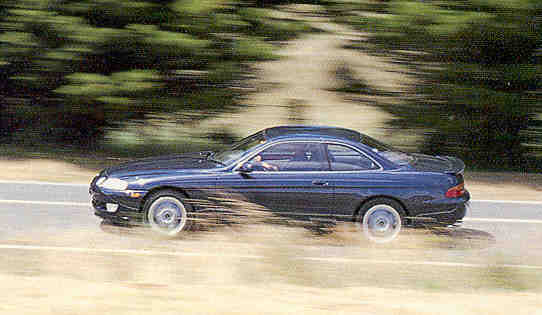 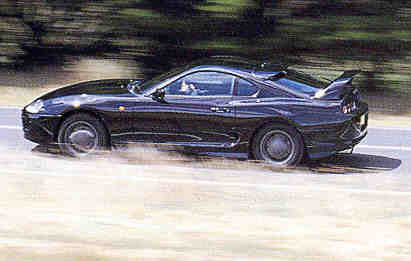 If your idea of entertainment behind the wheel is point-and-squirt performance , the Supras noticably more fun behind the wheel than the Soarer. But the Supra shows it is possible to get too much of a good thing. Performance of both cars is good, the punchier Supra delivering some genuinely quick numbers despite a hefty 1500kg kerb weight. Zero to 100 km/h takes 5.7 secs and 400m times averaged 14.0 secs at 162 km/h terminal speed. Grunty or what! With the more sedate eight, the Soarer clocked 7.7 secs to 100 km/h and made it through the clocks at the end of the 400m strip in 15.5 secs at a quiet 149 km/h. The Soarers 1700kg's is partly to blame. The Getrag six-speed box fitted to the Supra is not as light or precise as you'd expect from a Japanese box (because it's actually German). The Soarer's automatic? Well, as with the same powertrain in the LS400, the changes are all but imperceptible. While we'd like something a little brisker in action, we suspect the Soarer customer might prefer this transmission's laid-back seamlessness, through perhaps not the amount of noise it generates. When the selector is moved past reverse, it makes a little bleep; when in reverse, a repeated 'pleep, pleep, pleep'. Cute at first, but soon annoying. The Supra feels quick by any measure. Unlike many modern turbocharged cars, there is plenty of exhaust noise and you can plainly hear the turbos spinning up and down. Japanese buyers like to hear what they've paid extra for. The Soarer is eerily quiet by comparision. The Soarer rides like a Lexus, but doesn't handle like one. Steering feels noticably crisper straight-ahead than the LS400's, and is more communicative overall.   We drove two Soarers, both badged as Lexus SC400's, one equipped with active suspension and four-wheel steering, the other with metal springs and non-steering rears. Considering the different levels of technology, there wasn't much to seperate the two systems in use. While the air springs offer active control (most perceptable in fast, long corners), they are a bit slow to respond to body movements. The basic idea's a good one, but it may require a medium other than air, and faster transponders, to get it right. More development work may be in order. That said, a few kays behind the wheel of the Supra will prove that the old way is not necessarily the best way. While chassis response is very good indeed, and the big Toyota has grip aplenty, the car suffers from that particular form of Stone Age suspension tuning that both Japanese and Americans seem so addicted to. There must be an edict at companies in Japan and the States that suspension has to be hard to be sporting. And in the case of the Supra's that 'H-A-R-D'. Tons of fun on a ride and handling course, but bloody tiring after an hour or so on real roads. Other consequences of the stiff springs and dampers were rattles and frizzles from the dash and rear cargo area trim. Crisper steering than the Sc400's is a plus, though it;s not eneough to level the scales.  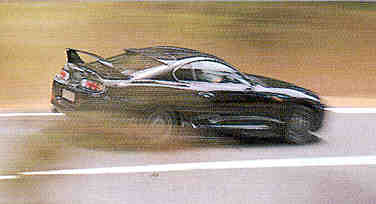 Both of these cars are big. Big eneough to make a Commodore or Falcon owner feel at home, big eneough to feel slightly ponderous. This bigness sits less easily with the overtly sporty Supra than the Soarer. If there's a payoff with the suspension setup of the Supra, it's that the stiff underpinnings combine with the fast steering to make the car easy to place and seemingly smaller than it is. Like an agile Gorilla. Move, Urgo - quick! But the ride is still needlessly brutal and there are cars - the BMW M3 comes quickly to mind - which are equally tossable abd don't require a kidney belt. The extra wheelbase of the SC400 provides a suprisingly roomy and comfortable rear seat. Adults up to about 180cm can fit comfortably in the rear with someone of equal height up front. And they can get in and out without a trip to the Chiropractor too. Getting two adults in the back of the Supra with two up front wouldn't require a Chiropractor - maybe a butcher instead. One person can ride side - saddle in the rear of the Supra, but two adults won't be happy back there if the folks up front are life size. The rear seat is best left folded down and the area used as an extension of the luggage area. The Supra's instrument panel is up to the sporty aspirations of the exterior and almost as extreme. An array of instruments, along with a pretty good climate control system (unusually for a Japanese car, offering override capability) sweeps from the centre console up to the driver's door. In the black-on-black Supra we drove the whole interior could benefit from being lighter and brighter. 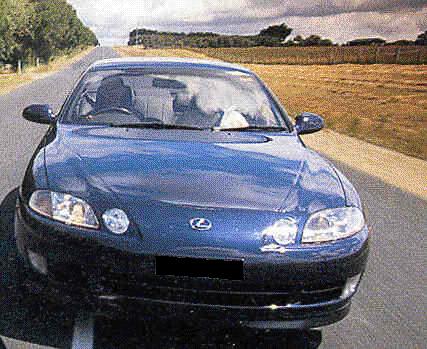 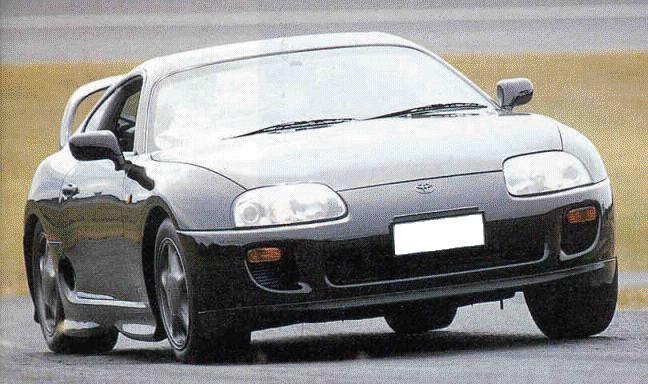 Over in the SC400 another '80s technological marvel - the digital instrument cluster - lives on, although in an 'all-new' form. Mixing the Lexus LS400's holographic instrument array with something that could have been tugged from the dash of a 1983 LTD, the SC400's digital cluster is really something else. With the same exaggerated 3D effect as the LS400 (but in digital form) when switched on, this digital panel does offer novelty value. Too bad it isn't user friendly. The tacho is a narrow strip across the base of the cluster, giving strength to the oft-repeated remark that automatics don't need tachometers. And the cluster emits a 'pleep' sound, similar to that of the singing gear selector, when the turn indicators are blinking, instead of the usual clicking sound. There's an analogue instrument cluster in the Lexus SC400's sent to North America, but not in the right-hook versions. At least the silly instrument cluster is in a pleasant surround. Slathered with nice, soft beige leather (seating surfaces only) and vinyl, the cabin ambience of the SC400 is a real positive. There's real wood on the door trims and centre console of the eights, too. As you might expect with these sort of conveyences, leather trim comes with top spec versions of both cars, but then were not talking cheap for either one. 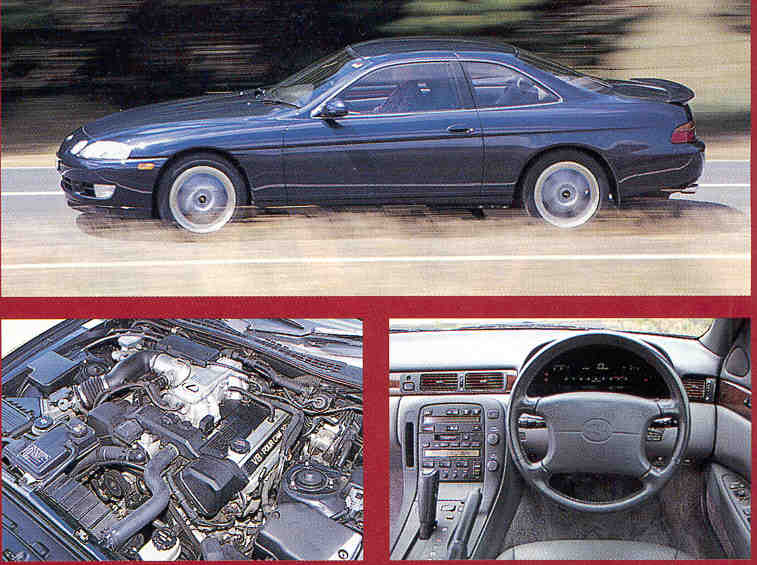 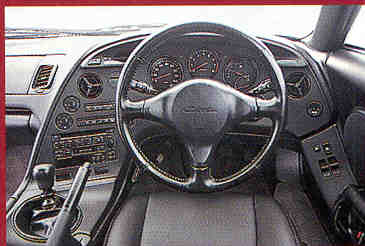 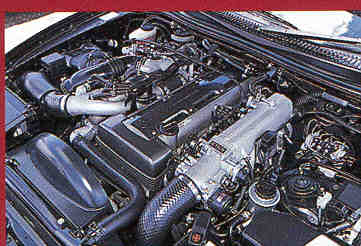 As driven, the Supra RZ turbo will set you back A$ 148,000 (the four speed automatic is A$ 1500 less - go figure) and the SC400 with two-wheel steering is A$ 149,000. But you can still pay more. There's a hang the expense 'luxury' Supra, the GZ, which is A$ 159,500 and comes solely with the automatic box. And that actively suspended, four wheel steered Soarer will give you A$ 500 change from a A$ 170,000 banknote. Spiffy as the super Soarer's gee-whiz technology is, the 'regular' V8 is the pick of the pair. The Supra in box-stock form was quick, but the sporty car isn't such a balanced package as the Soarer, which is the wise pick as a car to live with. With an RX-7 SP about as rapid as the Supra - -and nearly 50 grand cheaper - the jumbo sportster doesn't offer particularly good value. Still, extroverts que here... |
| Specifications | ||
|---|---|---|
| Information | Toyota Supra RZ | Lexus SC400 |
| Price Basic | A$ 148,000 | A$ 149,000 |
| Engine | inline 6 | V8 |
| Induction Valve | efi/twin cam,24v,twin turbo | efi/twin cam,32v |
| Bore x Stroke(mm) | 86.0 x 86.0 | 87.5 x 82.5 |
| Capacity(cc) | 2997 | 3968 |
| Compression Ratio(:1) | 8.5 | 10.4 |
| Max Power(Kw) | 209 @ 5600 | 194 @ 5400 |
| Max Torque(Nm) | 440 @ 3600 | 365 @ 4600 |
| Transmission | 6 speed manual | 4 speed auto |
| First | 3.827 | 2.531 |
| Second | 2.360 | 1.531 |
| Third | 1.685 | 1.000 |
| Fourth | 1.312 | 0.705 |
| Fifth | 1.000 | - |
| Sixth | 0.793 | - |
| Reverse | ? | ? |
| Differential | 3.266 | 3.916 |
| Chassis | unitary | unitary |
| Drive | rear | rear |
| Suspension - front | wishbones,coil springs,anti-roll bar | wishbones,coil springs,anti-roll bar |
| Suspension - rear | wishbones,coil springs,anti-roll bar | wishbones,coil springs,anti-roll bar |
| Steering | power rack & pinion | power rack & pinion |
| Turning Circle(m) | 10.8 | 10.8 |
| Brakes - front/rear | power vented disks,ABS | power vented disks,ABS |
| Tyres - front | 225/50 ZR17 | 215/60 R15 |
| Tyres - rear | 245/50 ZR17 | 215/60 R15 |
| Kerb Mass(kg) | 1490 | 1630 |
| Fuel Tank(l) | 70 | 78 |
| Body | three door coupe | two door coupe |
| Wheelbase(mm) | 2550 | 2690 |
| Track (front/rear) | 1520/1525 | 1520/1525 |
| Length | 4520 | 4860 |
| Width | 1810 | 1790 |
| Height | 1275 | 1340 |
| Performance | standing start | standing start |
| 0 - 60 km/h | 2.7 | 3.7 |
| 0 - 80 km/h | 4.2 | 5.6 |
| 0 - 100 km/h | 5.7 | 7.7 |
| 0 - 120 km/h | 8.0 | 10.3 |
| 400m | 14.0 @ 162.0 km/h | 15.5 @ 147.8 km/h |
| Rolling Start | 3rd, 4th, 5th, 6th | kickdown |
| 40 - 70 km/h | 3.2, 4.4, 6.5, 9.9 | 2.1 |
| 60 - 90 km/h | 3.0, 3.7, 5.5, 8.6 | 3.0 |
| 80 - 110 km/h | 2.9, 3.6, 4.8, 7.3 | 3.4 |
| 100 - 130 km/h | 2.9, 3.7, 5.2, 7.0 | 4.3 |
Back to Home Page